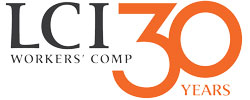
Paul Jouet Owner of Tax Help NOLA
Contractor documents, receipts and records, and changing laws all go into preparing your taxes, and it can be overwhelming. I work with a number of different small businesses, and I recommend that they follow these steps at the end of the year.
Preparing 1099S
If you use contract labor for your business, each individual that you’ve paid more than $600 needs to complete a W9 form. In reality, you should issue this form from the outset of a contract engagement, but you can still do it at the end of the year.
The W9 gives you the information to issue the 1099 forms they need to report their income. Your accountant may take care of issuing the 1099 for you so long as you provide them with the W9 and the amount paid. And don’t forget to get payroll records in order because W2s are due to your employees by January 31.
Max Out Retirement Accounts
Consider increasing your contribution to your retirement plans. If you have a 401(k), IRA, or other retirement plans, it may be a good idea to temporarily increase your contribution into them before year’s end. By doing this, it can help lower your taxable income. If you are earning $50,000 a year in taxable income and contribute $5,000 to your IRA and $5,000 to your 401(k) plan, that can drop your taxable income to $40,000, lowering the amount of money that can be taxed.
Charitable Donations
Consider making a few extra donations before the calendar year ends. Charitable contributions must be made to qualified organizations with a 501(c)(3) status, and you need to get (and hold on to) a receipt. And have you donated household items or clothes? Again, get a receipt. To help estimate the value of your donation you can check out the Salvation Army Guide, IRS Guide or Goodwill Valuation Guide. The total value of non-cash items must exceed $500 to one or more charities during the year.
Get Organized
When January comes, you do not want to be frantically looking for receipts from the summer. Eliminate anxiety by getting organized now. Specifically, I recommend that you:
- Round up all receipts and cancelled checks including those from charities.
- Check your latest brokerage statement for year-to-date gains or losses.
- Make a checklist of accounts to keep track of the Form 1099s when they arrive.
- Get medical receipts and insurance reimbursement forms in order.
Loss Harvesting
You may have heard the term, but loss harvesting means selling investments such as stocks and mutual funds to realize losses. You can then use those losses to offset any taxable gains you have realized during the year. Losses offset gains dollar for dollar. If your losses are more than your gains, you can use up to $3,000 of excess loss to wipe out other income.
If you have more than $3,000 in excess loss, it can be carried over to the next year. You can use it then to offset any 2016 gains, plus up to $3,000 of other income. You can carry over losses year after year for as long as you live.
Learn Which Tax Law Changes Will Affect You
Tax laws are constantly changing, and it’s wise to stay alert and up-to-date on changes that could affect your business. Tax Day is April 17. Under federal law, the tax deadline gets extended when it falls on a holiday or weekend, and so the tax deadline for most taxpayers will be the following Monday, April 17, 2017.
Increased Obamacare Penalties. The Affordable Care Act imposed penalties for those without qualifying health care coverage. For 2016, penalties rose again, hitting $695 per adult, or 2.5% of income. A family maximum will apply to the perperson amount, but the $2,085 amount is substantially higher than the $975 in 2015, and the $285 in 2014.
Increased Health Savings Contributions. Health savings accounts let people with high-deductible health plans set money aside on a pretax basis to cover the costs of their health care. For 2016, the contribution limit for individual policies remains at $3,350, but the maximum contribution for family policies rose by $100 to $6,750. A catch-up contribution of $1,000 for those 55 or older will continue to apply.
Standard Mileage Rate
Moreover, the 2016 increase in the standard mileage rate affected companies with vehicles used for business purposes. Cars, vans and some classifications of trucks can now be compensated 54 cents per business mile driven. This is down from 57.5 cents per mile in 2015.
Tax Help NOLA provides tax and accounting services to businesses across Louisiana and is also an LCIA Opportunity Maker. Learn more at taxhelpnola.com or call 504-305-6835.
← News and Insights